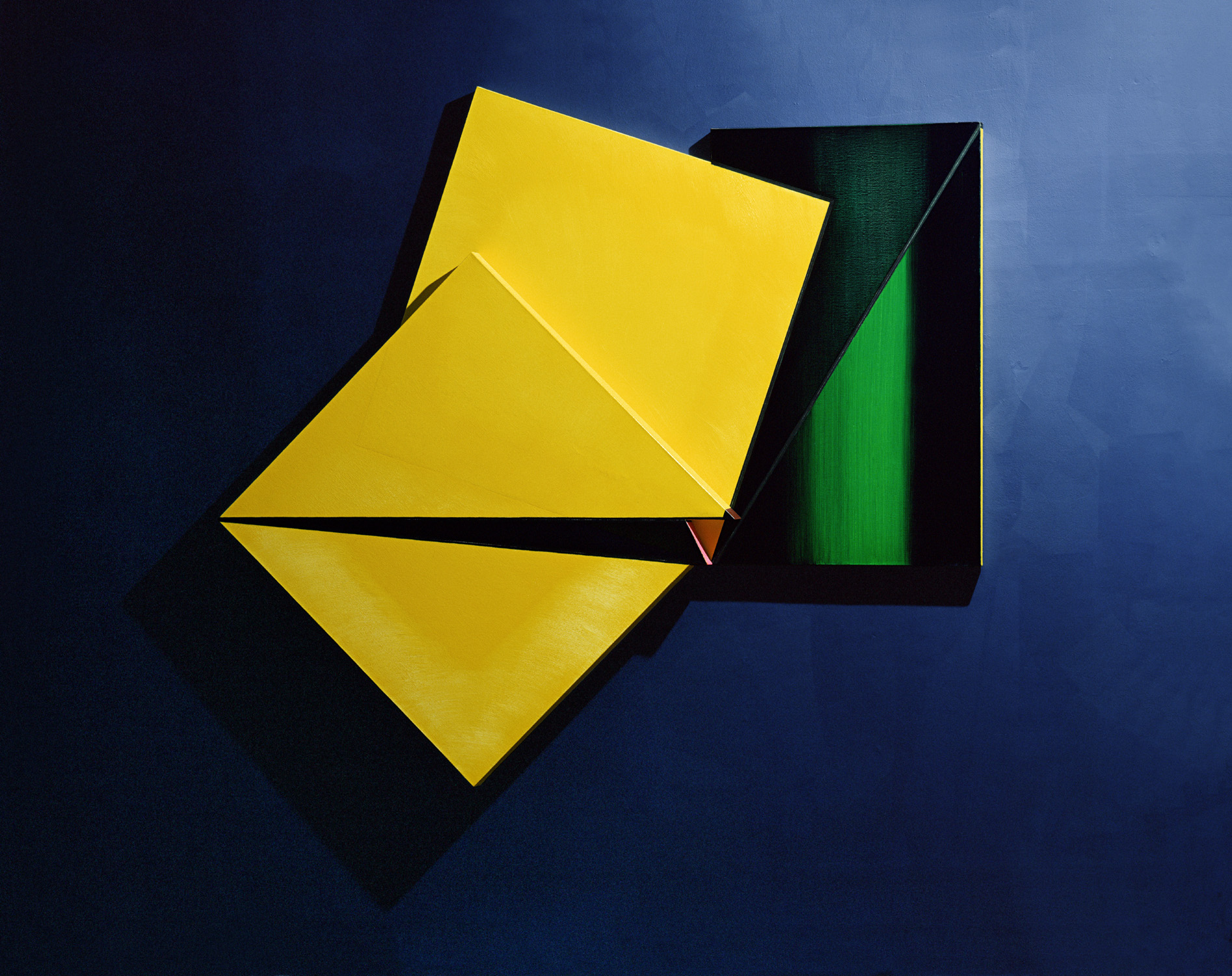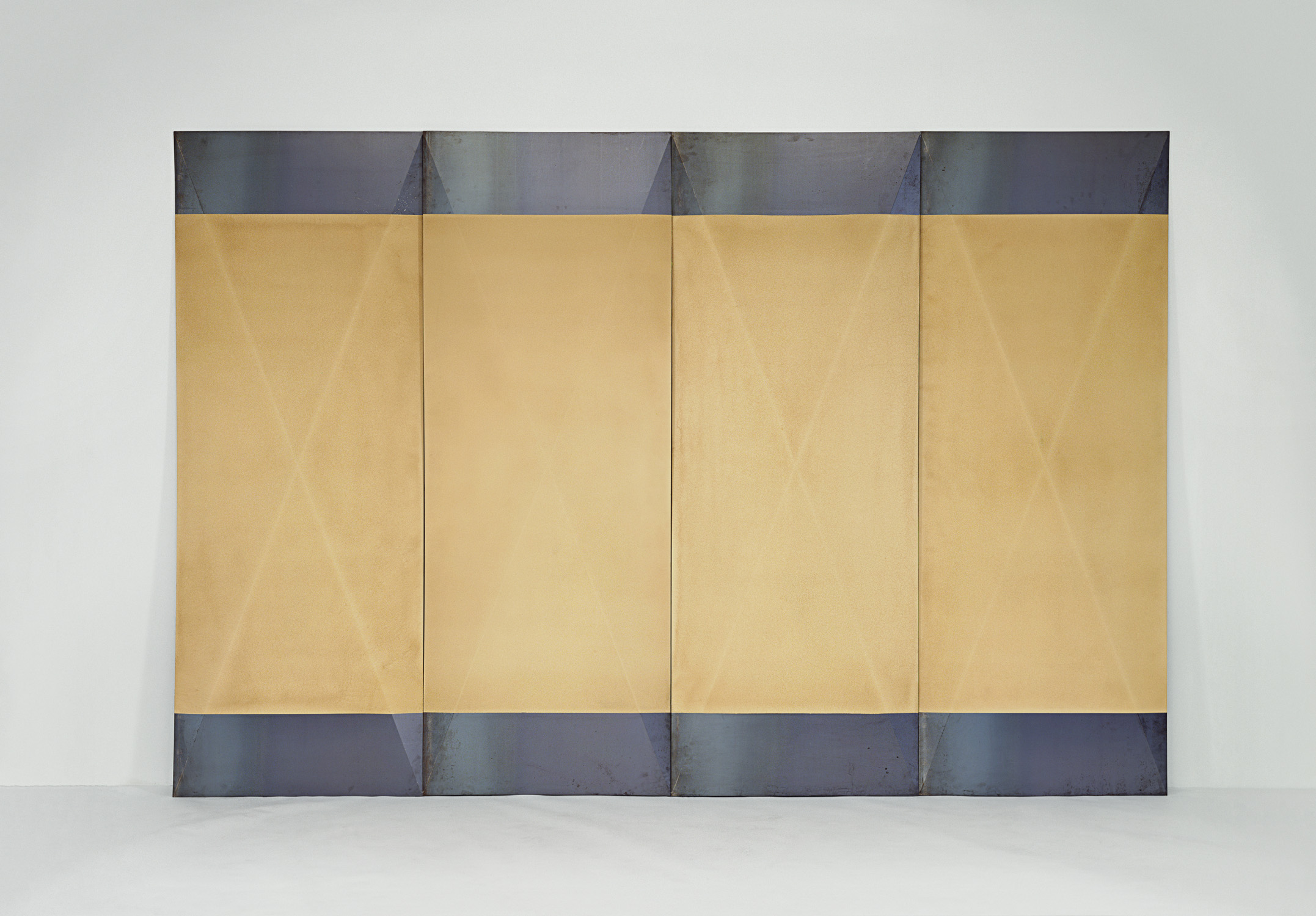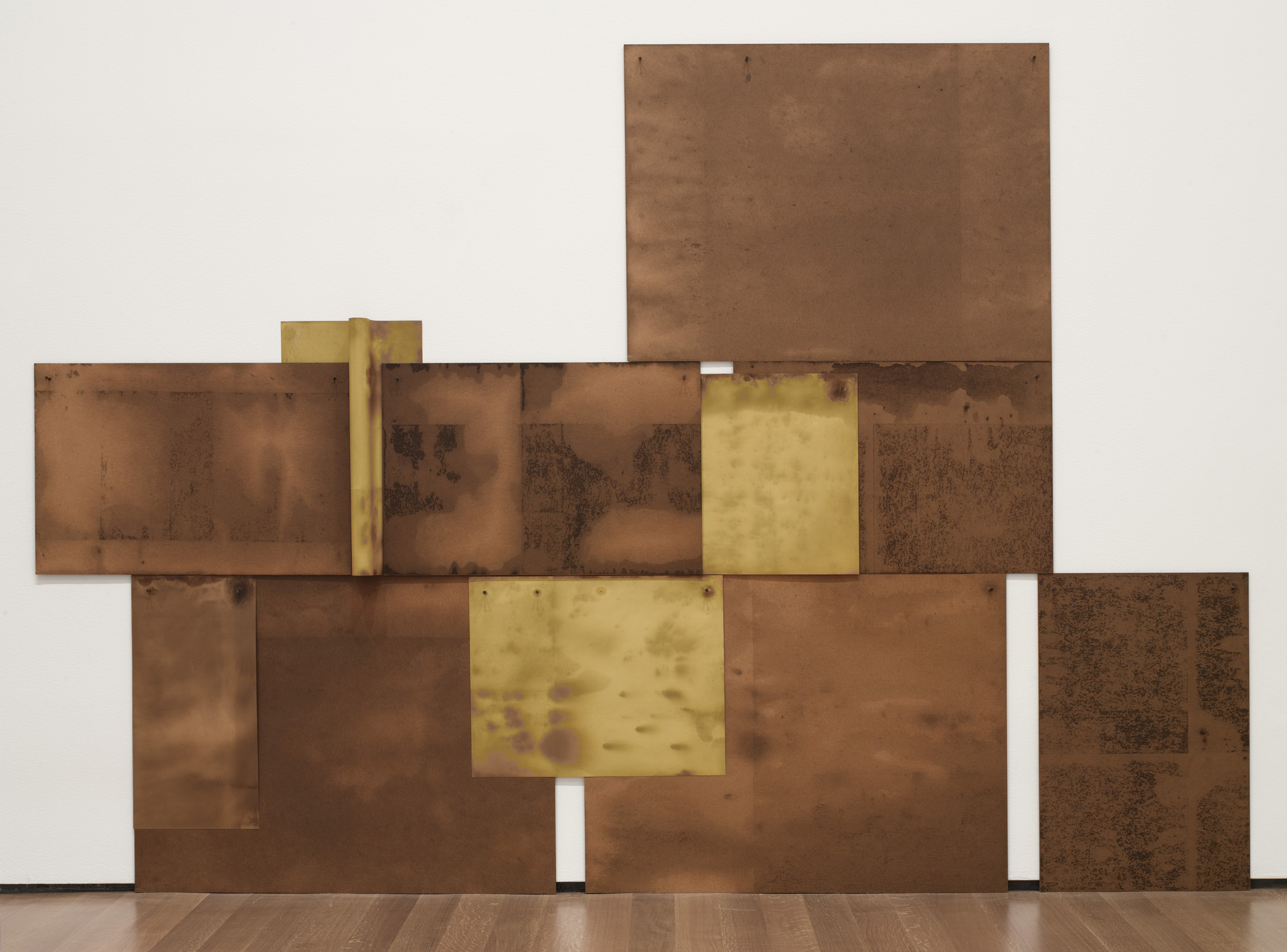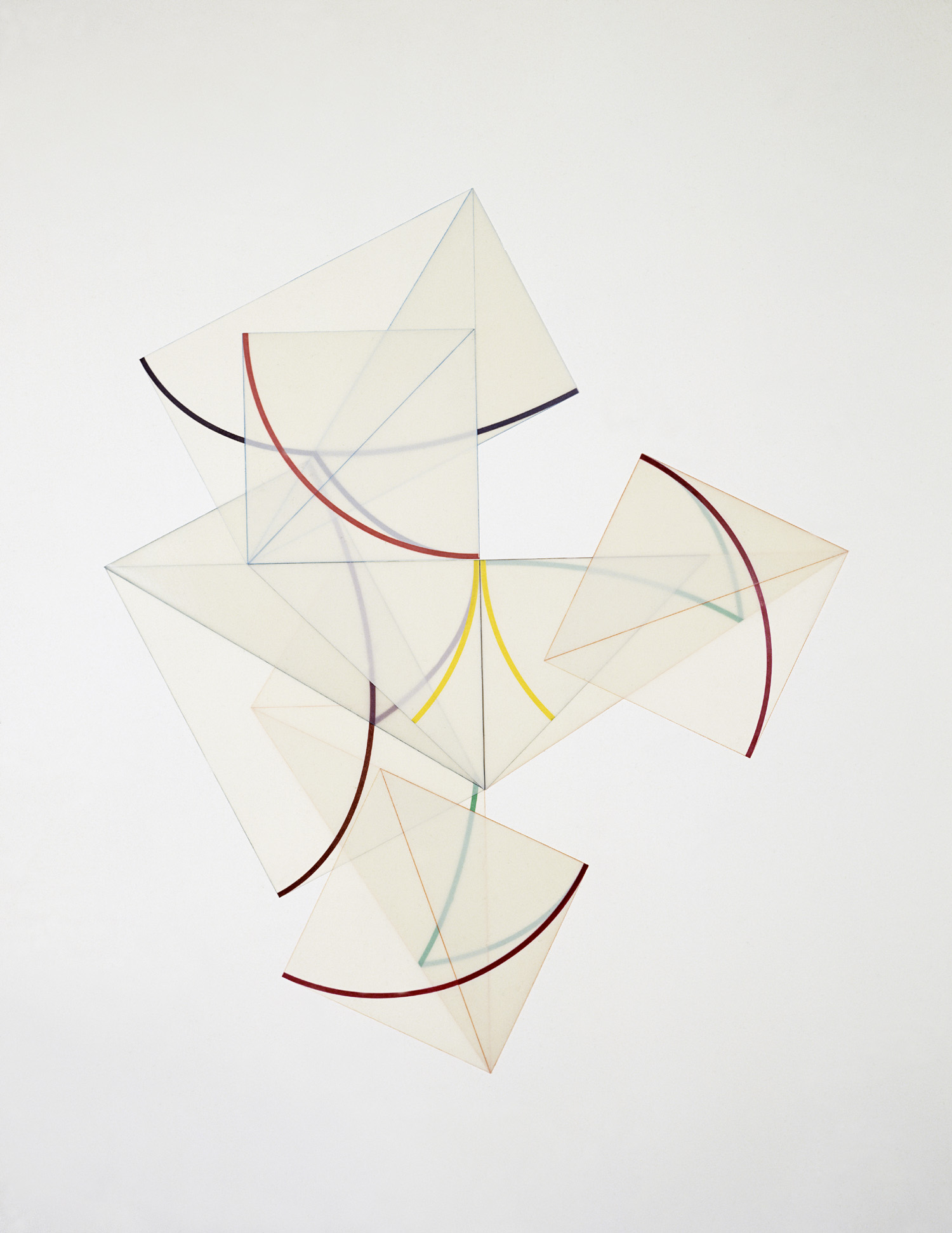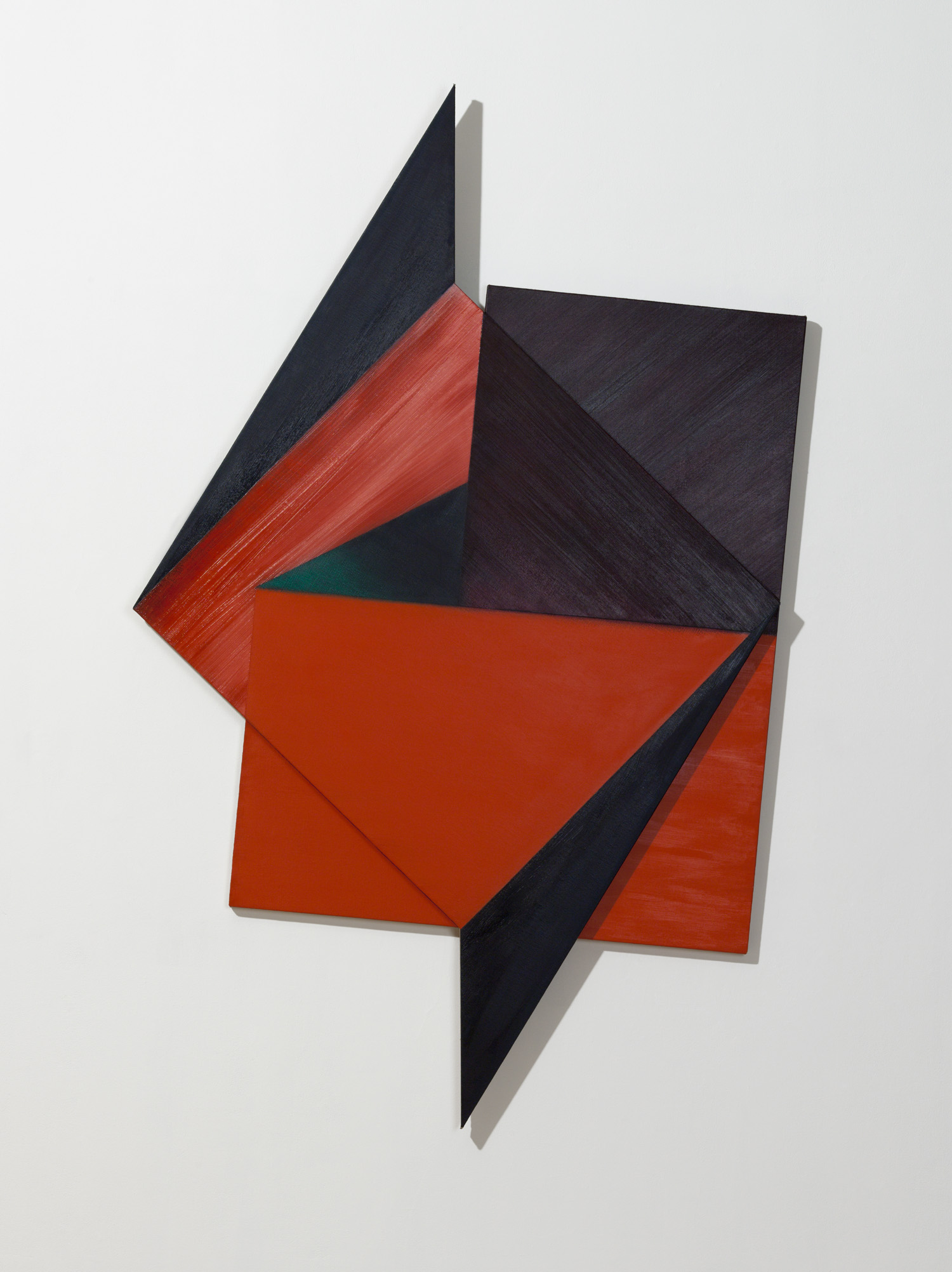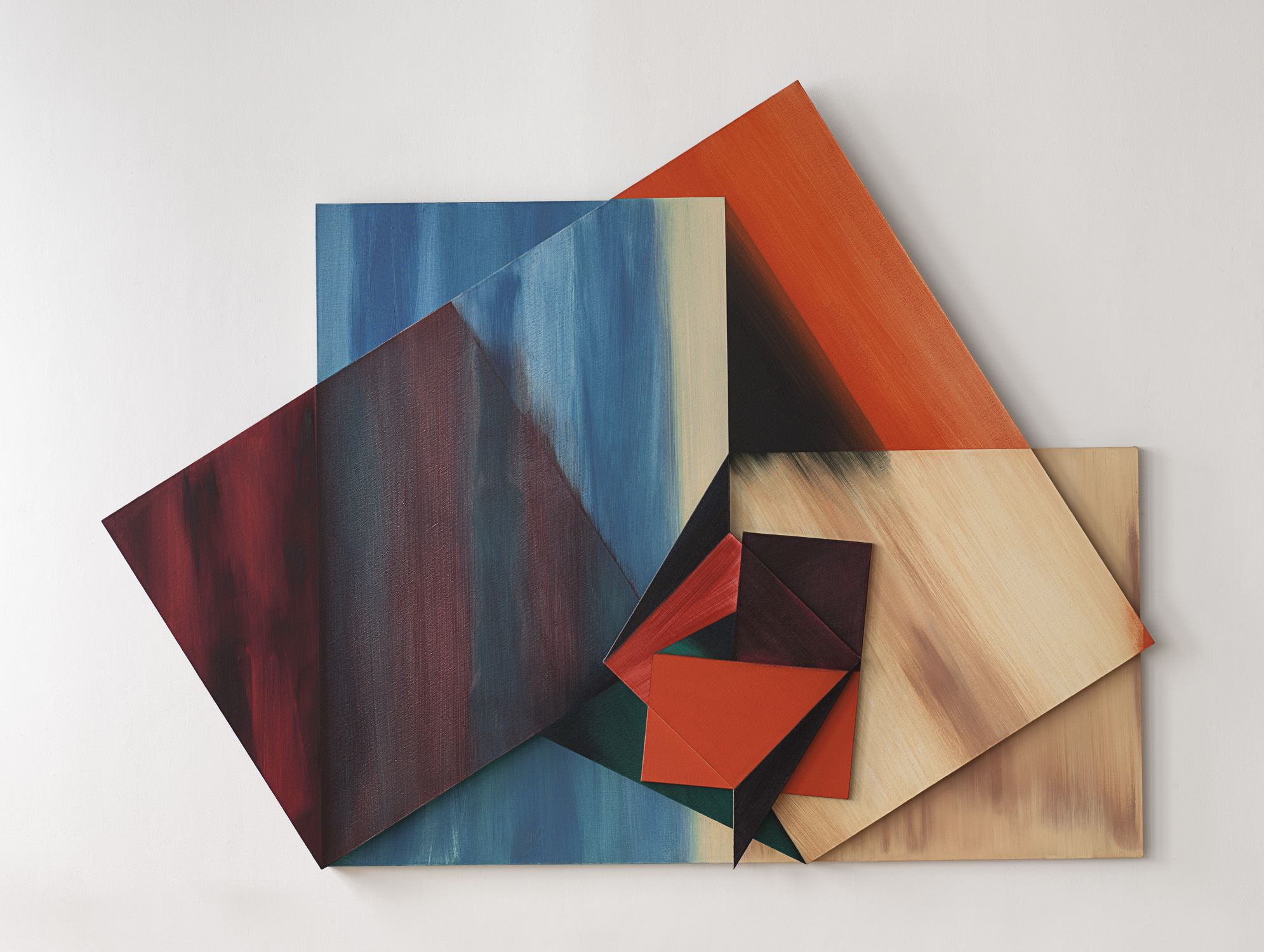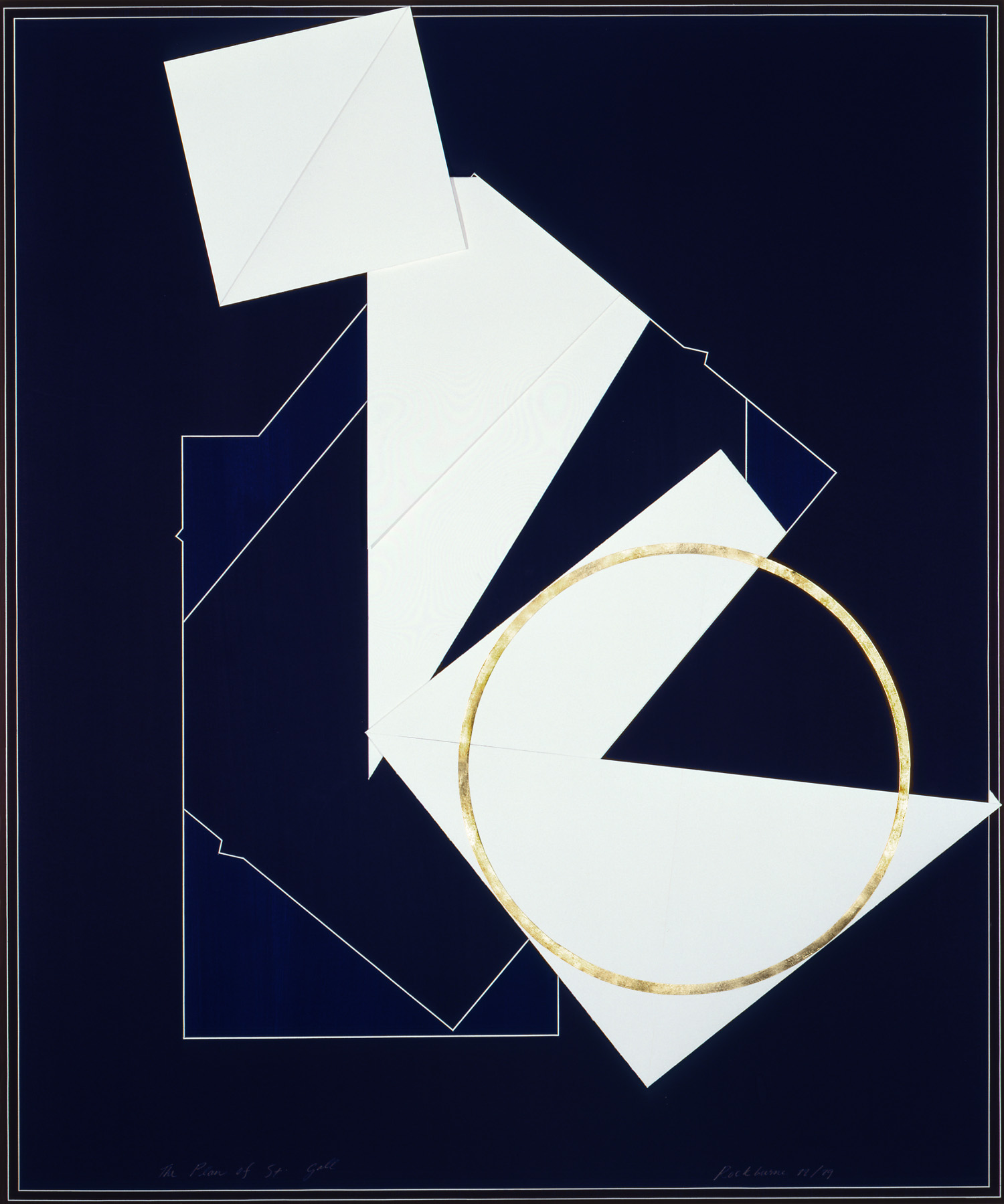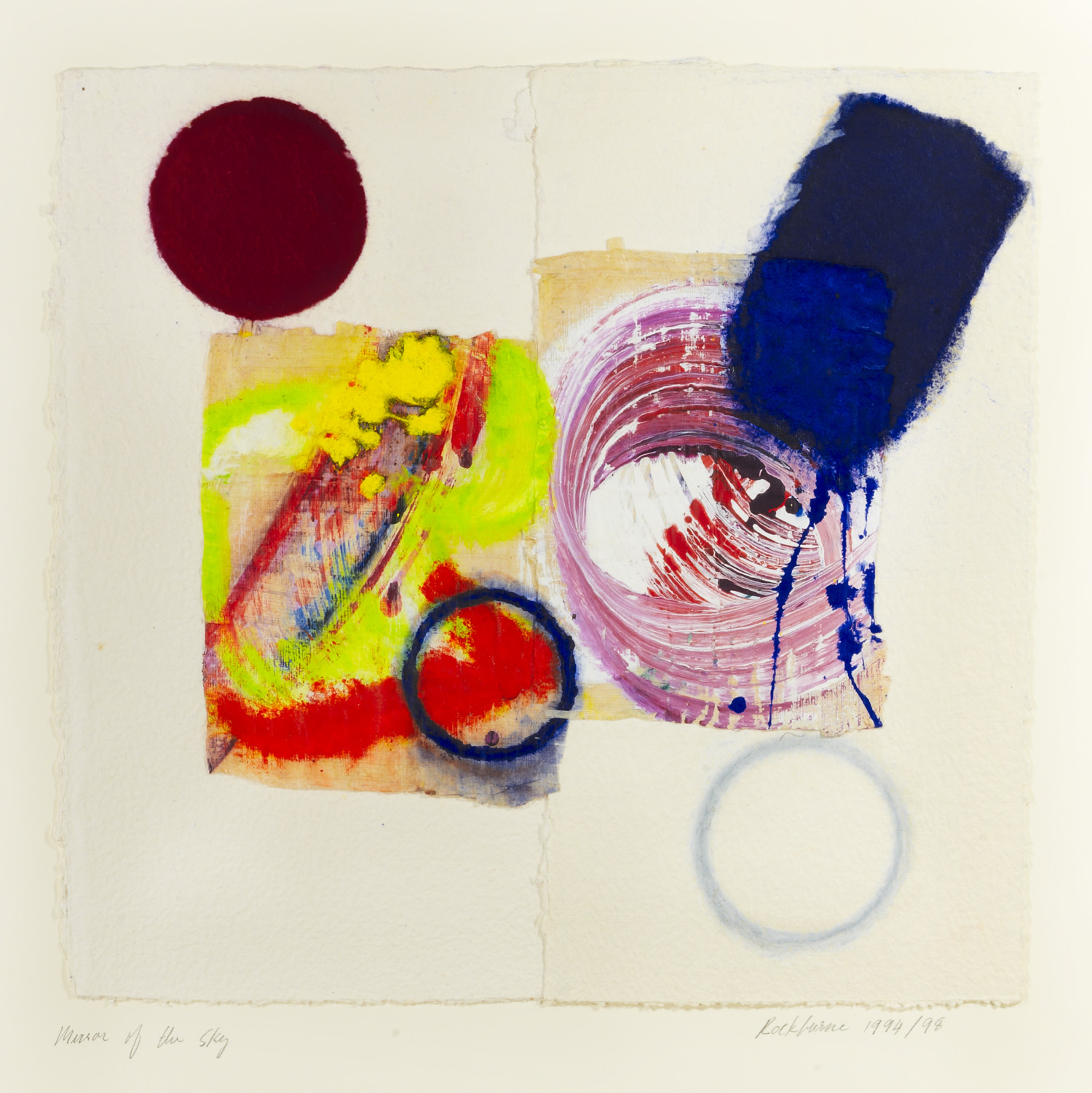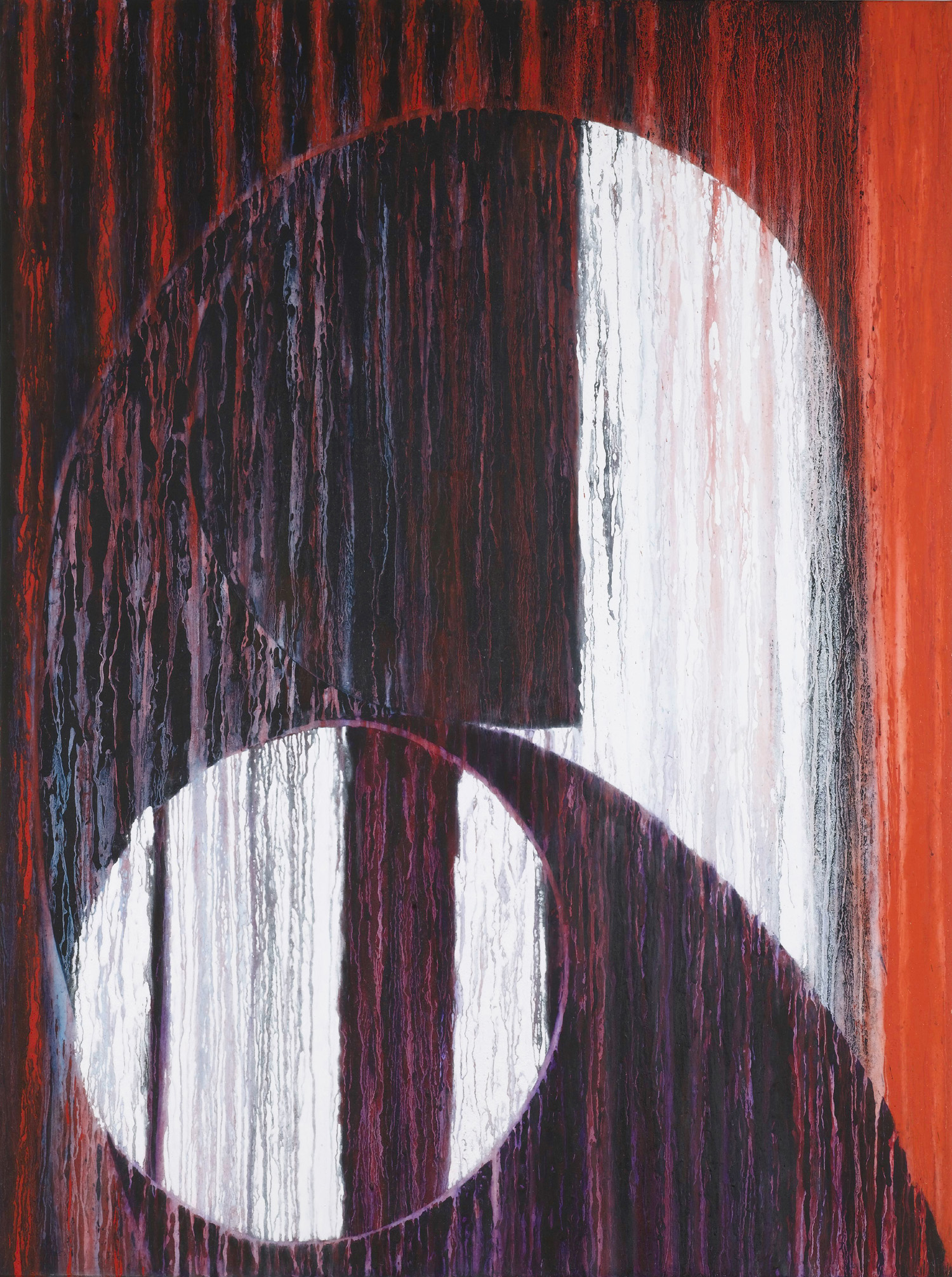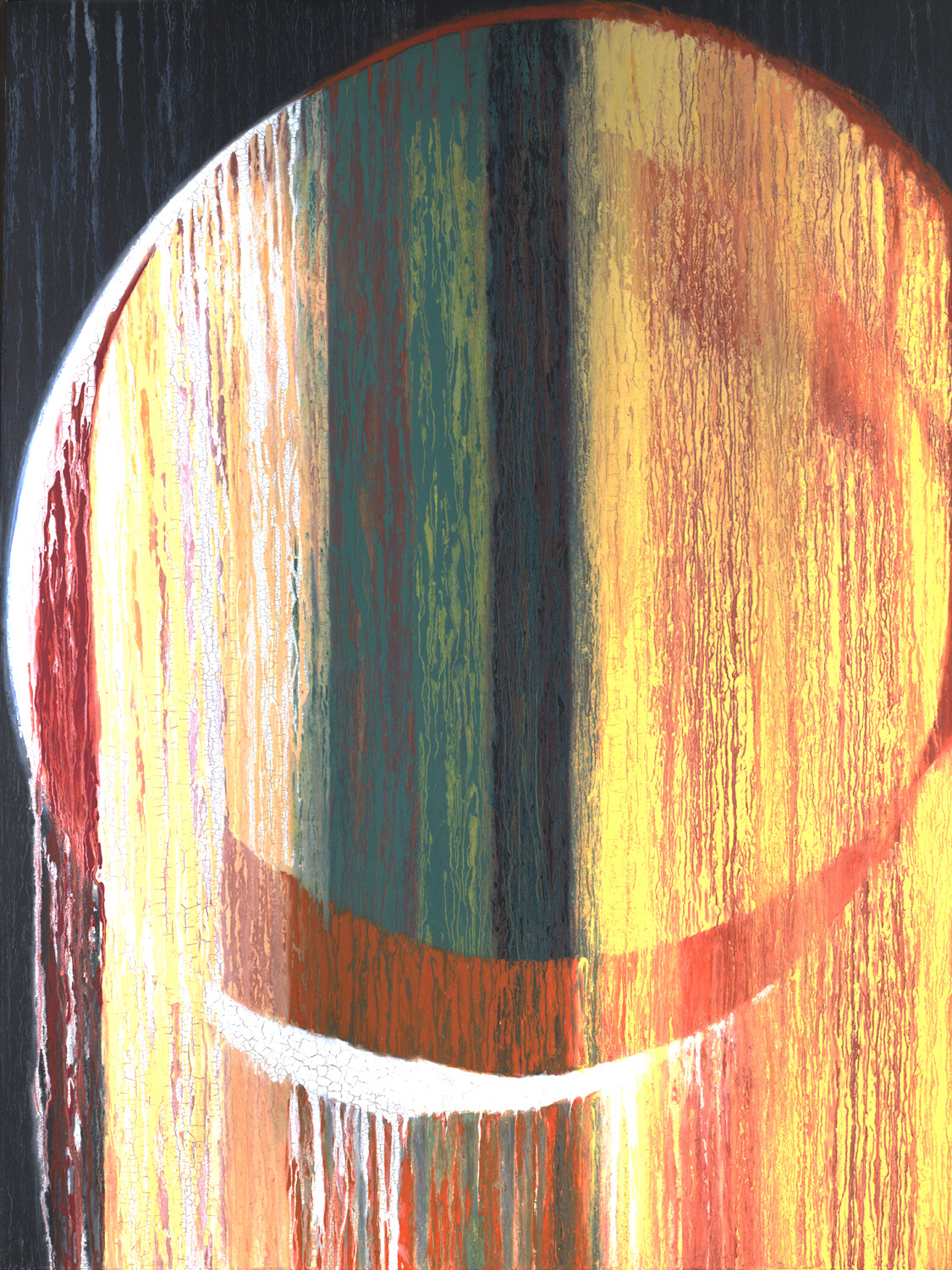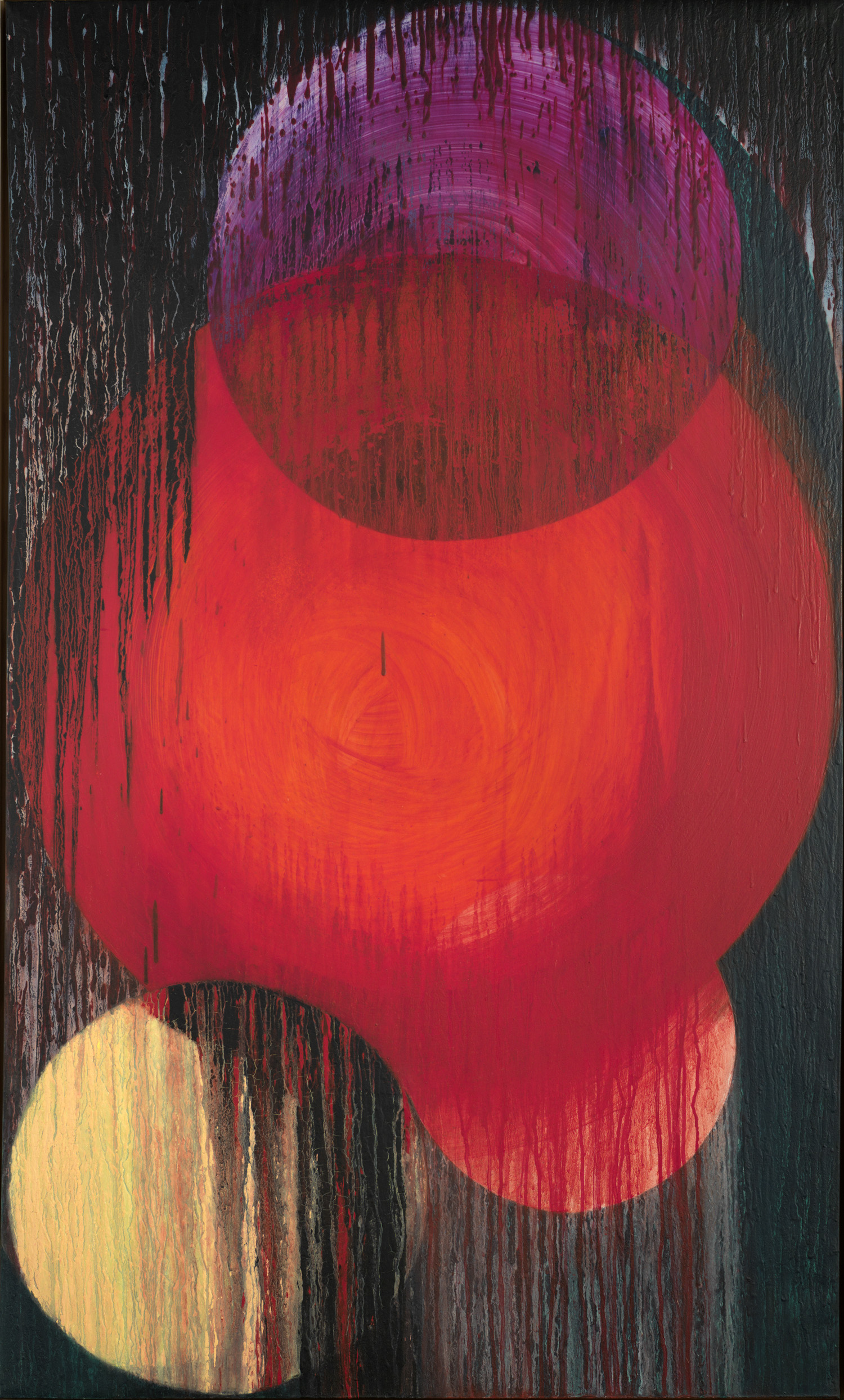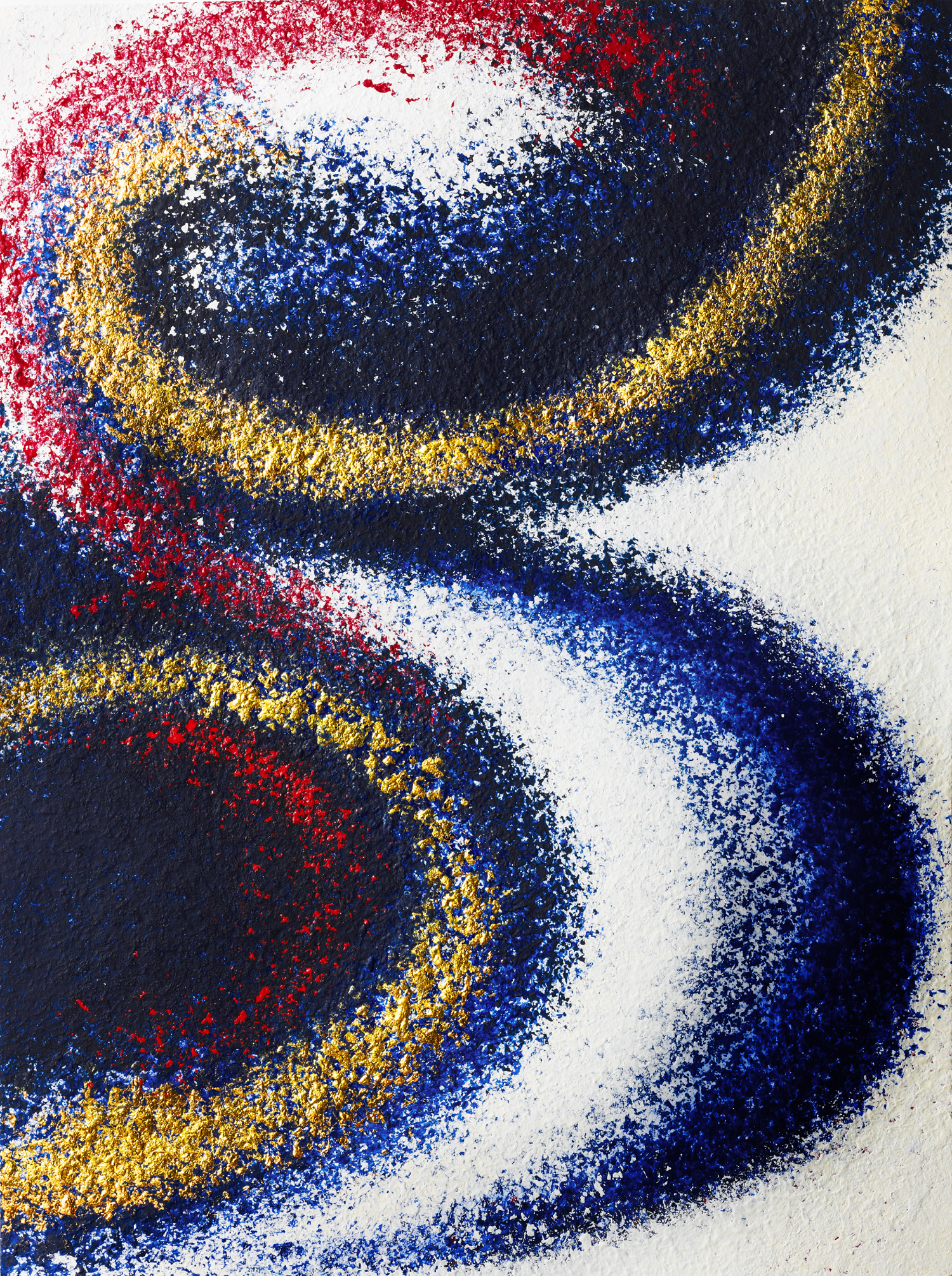Dorothea Rockburne: In My Mind’s Eye, the first career retrospective of this important and influential artist, opened at the Parrish Art Museum. Organized by Alicia Longwell, Lewis B. and Dorothy Cullman Chief Curator, Art and Education, In My Mind’s Eye will survey Rockburne’s work from the late 1960s to the present and range from such early iconic installation pieces as Scalar (1971) to the lushly painted Geometry of Stardust works (2009-2010). The exhibition will remain on view through August 14.
Among the more than fifty works in the exhibition are the monumentally-scaled wrinkle finish paint on steel Tropical Tan (1967–1968); the seminal crude oil, paper, and chipboard installation Intersection (1971); the remarkable shaped canvases such as I am Pascal (1986); and the recent watercolor on Dura-Lar works, including Three Point Manifold (2008). To underline the continuity of Rockburne’s career, the exhibition installation will follow a nonlinear trajectory, emphasizing the themes and variations that appear and reappear through the work. Groupings will highlight these affinities while underscoring the artist’s meticulous explorations of surface, transparency, and permutation—all essential investigations in the process of her art-making.
In a recent interview, Dorothea Rockburne said, "The way art works for me is a combination of thought, research, intuition, and very hard work. I don’t think things out in words; instead I see it in my mind’s eye." Her vision has been informed by such wide-ranging sources as mathematics, Renaissance art, astronomy, archeology, and philosophy, among others. Mathematics has been an especially persistent component of her work. According to David Anfam, “Underpinning Rockburne’s early maneuvers and continuing as a leitmotif through her output to the present is a fixation, sparked by [mathemetician] Max Dehn at Black Mountain, on an array of mathematical systems and theories, ranging from topology and set theory to the golden ratio and Fibonacci numbers and other, more esoteric scientific fields of inquiry. Although these suggest a daunting obstacle to the nonspecialist viewer, Rockburne stresses that scientific expertise is unnecessary to appreciate what she attains: ‘The work is a visual experience. You don’t have to know the composition of water to swim in it.’”
Born and raised in Montreal, Rockburne received classical training there at the École des Beaux-Arts and later at the Montreal Museum School. Beginning in 1950 she attended Black Mountain College in Asheville, North Carolina, where she studied painting with Franz Kline, Jack Tworkov, and Esteban Vicente; dance under Merce Cunningham; and music with John Cage, in addition to her studies with Dehn. Among her fellow students were Robert Rauschenberg, Cy Twombly, and John Chamberlain. When she moved to New York, she participated in early dance and performance pieces with Rauschenberg, Claes Oldenburg, and Carolee Schneemann, among many others. Rockburne’s work, with the use of materials such as sheet metal, chipboard, and crude oil, began to gain wide attention in New York in the late 1960s; in 1971 she had her first solo exhibition at the famed Bykert Gallery. While she now lives in New York City full time, Rockburne maintained a home on the East End for fifteen years.
Dorothea Rockburne’s work is in more than 100 public and private collections, including those of the Museum of Modern Art, the Whitney Museum of American Art, the Metropolitan Museum of Art, the Parrish Art Museum, the High Museum of Art, and the Philadelphia Museum of Art. She has exhibited in museums and galleries internationally for more than forty years. Her list of honors includes the National Academy Museum & School of Fine Arts, Lifetime Achievement Award; the American Academy of Arts and Letters, Jimmy Ernst Lifetime Achievement Award in Art; a Guggenheim Fellowship; and a grant from the National Endowment for the Arts.
